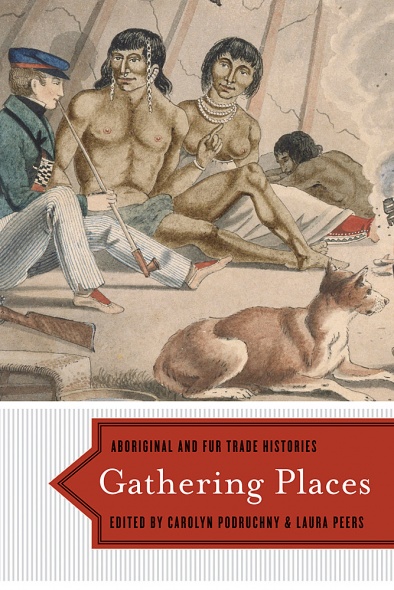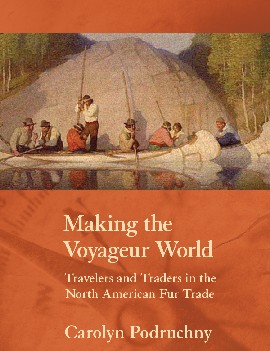Biography
 I am an historian of Aboriginal and French relations and Metis history in early North American history, specializing in fur trade encounters, systems of communication, and identity formation. My first book charts the world of French Canadian voyageurs in the Montreal-based fur trade, and my current projects explore the blending of French Canadian, Ojibwe and Cree narratives in the guise of fur trade stories and the French-Saulteaux dictionary compiled by Roman Catholic missionary Georges-Antione Belcourt in the mid-19th century. I teach courses on early Canadian and Aboriginal history, as well as historical methodology.
I am an historian of Aboriginal and French relations and Metis history in early North American history, specializing in fur trade encounters, systems of communication, and identity formation. My first book charts the world of French Canadian voyageurs in the Montreal-based fur trade, and my current projects explore the blending of French Canadian, Ojibwe and Cree narratives in the guise of fur trade stories and the French-Saulteaux dictionary compiled by Roman Catholic missionary Georges-Antione Belcourt in the mid-19th century. I teach courses on early Canadian and Aboriginal history, as well as historical methodology.
Areas of Research
- Early Canadian history, especially cultural and social
- Relations between French Canadians and Algonquian-speakers
- Metis ethnogenesis
- Oral history and folklore
- Book and print history
Recent Publications
Contours of a People: Metis Family, Mobility and History, edited by Nicole St-Onge, Carolyn Podruchny, and Brenda Macdougall
How do the Metis understand their world, and how do family, community, and location shape their consciousness? Such questions inform this collection of essays on the northwestern North American people of mixed European and Indigenous ancestry who emerged in the seventeenth century as a distinct culture. The essays in the collection go beyond the concern with racial and ethnic identity that take centre stage in most discussions of Metis culture to offer new ways of thinking about Metis identity.
Gathering Places: Aboriginal and Fur Trade Histories, edited by Carolyn Podruchny and Laura Peers
British traders and Ojibwe hunters. Cree women and their metis daughters. Explorers and anthropologists and Aboriginal guides and informants. These people, their relationships, and their complex identities and worldviews were not featured in histories of North America until the 1970s, when scholars from multiple disciplines began to bring new perspectives and approaches to bear on the past.
Gathering Places presents some of the most innovative and interdisciplinary approaches to metis, fur trade, and First Nations history being practised today.
Whether they are discussing dietary practices on the Plateau, trees as cultural and geographical markers in the trade, the meanings of totemic signatures, issues of representation in public history, or the writings of Aboriginal anthropologists and historians, the authors link archival, archaeological, material, oral, and ethnographic evidence to offer novel explorations that extend beyond earlier scholarship centred on the archive. They draw on Aboriginal perspectives, material forms of evidence, and personal approaches to history to illuminate cross-cultural encounters and challenge older approaches to the past.
These fascinating essays on aspects of the history of Rupert’s Land mark a significant departure from the old paradigm of history writing and will serve as models for recovering and communicating Aboriginal and cross-cultural experiences and perspectives.
Making the Voyageur World: Travelers and Traders in the North American Fur Trade
French Canadian workers who paddled canoes, transported goods, and staffed the interior posts of the northern North American fur trade became popularly known as voyageurs. Scholars and public historians alike have cast them in romantic roles of rugged and merry heroes who paved the way for European civilization in the wild northwest. This book looks past the stereotypes and reveals the contours of voyageurs' lives, world views, and values. Making the Voyageurs' World argues that voyageurs created distinct identities shaped by their French-Canadian peasant roots, the Aboriginal peoples they met in the northwest, and the nature of their workplace as indentured servants in diverse environments. Voyageurs' identities were also shaped by the liminality inherent in their constant travels and by their own masculine ideals that emphasized strength, endurance and daring. Although voyageurs left few conventional traces of their own voices in the documentary record, an astonishing amount of information can be found in descriptions of them by their masters, explorers and other travelers.

